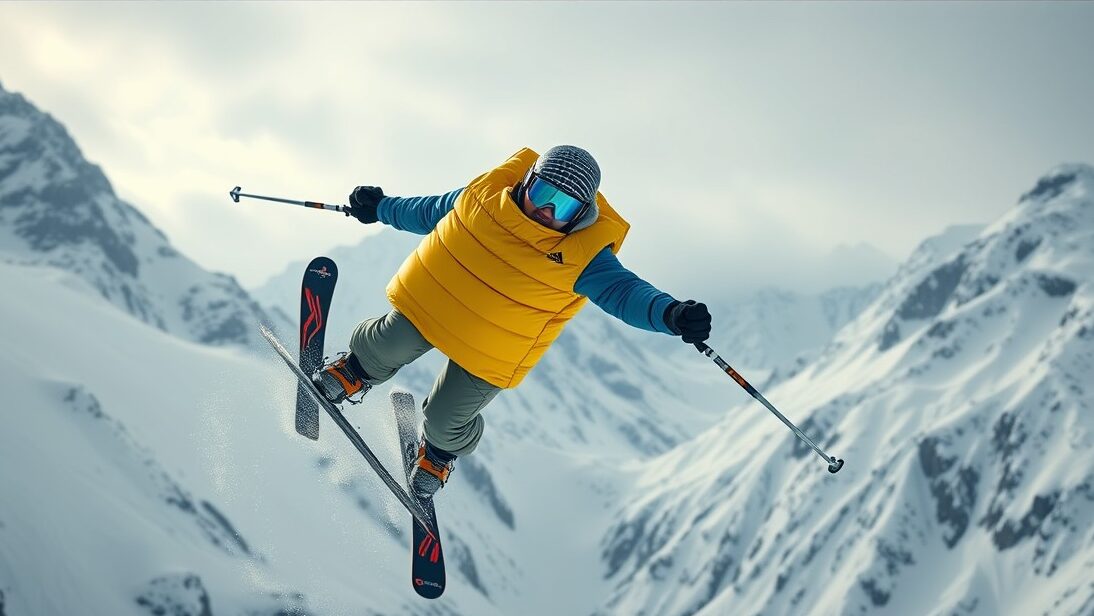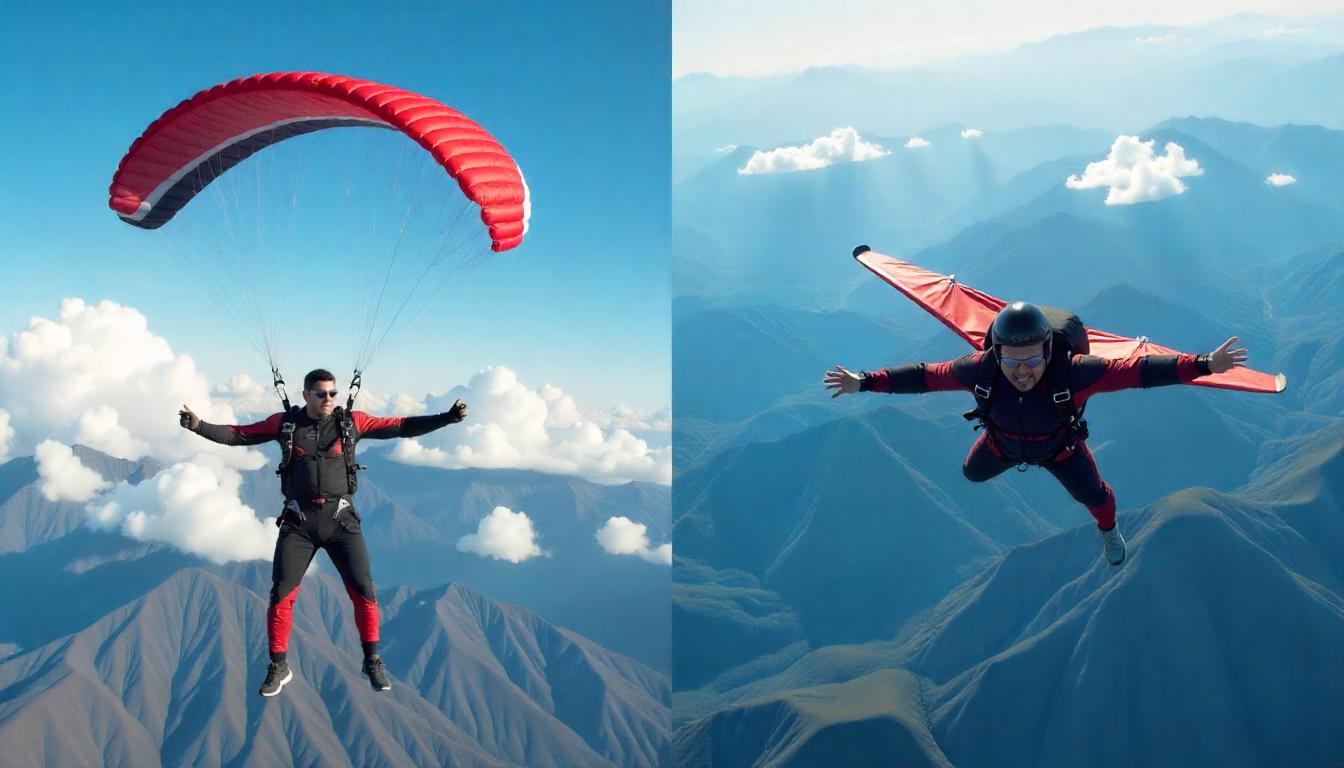Airbag Technology enhances safety a lot in extreme sports. It provides athletes valuable protection against tough impacts. Extreme sports challenge skill and muscle power. Skiing, motocross, bicycle riding, and BASE jumping have great dangers. These are falls, crashes, and ill impacts. Helmets and pads are better, but airbags are a significant improvement in safety.
Safety in extreme sports has evolved a great deal over the years. Manufacturers have endeavored to reduce injuries and maintain performance. They improved helmets and body armor. Airbag Technology is a significant development. It employs quick sensors to cushion falls. It safeguards athletes before they land. Airbags began in automobiles. Today, they assist skiers, cyclists, and skydivers.
This article examines how airbags improve safety in extreme sports. They reduce risks of injuries. They also determine the future of these sports. Airbag systems gain popularity. They assist in making extreme sports safer. Athletes are now able to perform harder with greater confidence.

Understanding Airbag Technology
Airbag Technology is a new safety technology. It cushions athletes from heavy blows with an air bag that inflates quickly when they fall. Initially applied to vehicles, airbags now assist in sports. They reduce damage by absorbing impact.
Airbag Technology has important components:
- Sensors: They detect rapid changes in motion, such as falls or harsh stops. This initiates the airbag inflation.
- Inflation Systems: Airbags inflate in seconds with gas or special technology. This creates a soft barrier.
- Impact Absorption: The airbag distributes force from impacts. This reduces stress on the body and prevents breaks or injures inside.
Cars received airbags in the 1970s to protect people during crashes. They reduced fatalities. So, they moved into racing, skiing, and motocross, where accidents are common. Today, Airbag Technology is improving for sport. It provides sportsmen with a light, wearable means of protection that functions instantly. With smarter sensors and improved fit, airbags today reduce injuries without interfering. This renders sports safer than ever before.

The Role of Airbag Technology in Extreme Sports
Airbag Technology is enhancing safety in extreme sports by protecting against hard impacts. Athletes always test limits, so injuries become inevitable. Advanced safety equipment is of key importance. Airbags detect rapid motion changes and expand rapidly. They are being incorporated into extreme sports to reduce injury risks.
Skiers and snowboarders frequently crash at full speed. Spine and chest injuries are avoided by Airbag Technology. They are located in vests or packs. When one crashes, they burst open. They break the fall before the athlete hits the ground. Now, numerous skiers and snowboarders use this technology to prevent trauma.
Motocross and mountain biking have rough terrain and high-speed wrecks. Airbag vests and suits provide essential protection. These systems cover the body, shoulders, and neck. They reduce the impact of a crash to avoid nasty injuries.
In skydiving and BASE jumping, Airbag Technology is an insurance policy for safety. In case a parachute malfunctions, airbags can inflate to cushion the fall. This can save lives.
Freerunning and parkour competitors are attempting wearable airbags. These trigger when a tumble is uncontrolled. This would revolutionize protection for acrobatic sport. Competitors may feel more comfortable performing tough tricks.

How Airbag Technology Works in Extreme Sports
Extreme sports airbag technology incorporates sensors, AI, and rapid inflation for safety. It detects sudden movement, falls, or collisions and inflates quickly. This provides shock absorption to reduce the risk of injury.
Sensors and AI monitor the movements of athletes at all times. The system inflates upon noticing a poor movement. This includes crashes, falling, or sudden stops. Pressurized gas inflates the airbag to cushion the spine, chest, and neck.
Airbag technology exists in a couple of forms:
- Wearable Airbags: These are motocross, skiing, and bike vests or suits. They inflate when a person falls to cushion the spine and chest.
- Landing Bags: These large airbags assist in freestyle skiing, BMX, and skateboarding. They rest at landing positions to break hard landings. This makes riders safer.
- Vehicle Airbags: These are used in race cars for high-speed racing. They protect drivers during crashes and rollovers.

Advantages of Airbag Technology in Extreme Sports
Airbag technology significantly reduces the risk of severe injuries in action sports. The major advantage is protection from damage to the head, neck, spine, and chest during accidents. Motocross, ski, or bicycle athletes are never safe. Airbags cushion shock and reduce trauma, which halts life-threatening injuries. Athletes feel safer with this equipment. They are able to compete harder without worrying about accidents. Airbag protection enables athletes to attempt new, dangerous stunts in sports such as freestyle skiing and motocross.
Airbags are now comfortable and assist performance as well. In contrast to heavy, old equipment, vests and suits are light and flexible. Athletes can move freely without the feeling of being weighed down. This allows them to concentrate on their skills. Airbags also accelerate healing. They make injuries less severe, so athletes can train and compete earlier. Airbag technology makes extreme sports safer and enables athletes to have longer careers. It is now essential for high-speed sports.

Challenges and Limitations of Airbag Technology
Airbag technology has its drawbacks in extreme sports, even though it has positives. Expensiveness is a major concern. Airbag suits and vests can be very expensive. Most amateur athletes do not have the money for them. Helmets and pads are cheaper. Airbags incorporate sensors, inflation, and AI. This increases the cost significantly. It’s challenging for all sportsmen to purchase this equipment. This is particularly the case with local sports clubs.
Safety is also a concern. Airbags are not flawless. They may misfire and go off at the wrong moment. Or, they may not function in a crash. Some are still cumbersome. This makes them difficult to wear for some athletes. These athletes should be able to move quickly. So, few individuals use them. Many still choose helmets and body armor. Airbags need to become cheaper and more dependable. They need to be less cumbersome as well. Otherwise, only the best athletes will utilize them in major competitions.
Future of Airbag Technology in Extreme Sports
AI will revolutionize airbag technology in extreme sports. Future airbags will incorporate intelligent AI to react faster. Improved sensors will detect falls more accurately. This technology will reduce errors. It will also enhance safety in motocross and skiing sports. New individualized airbag suits will enhance comfort as well as safety. Sportsmen can expand their limits without extra risk.
Airbags can be combined with virtual reality (VR) to train. Safety can then be practiced by athletes in VR. It can keep actual injuries at bay. Prices for airbags should reduce as they become less complex to manufacture. More sportspeople will be using them due to this. Extreme sports will be safer because of airbag technology. Athletes can then extend themselves more with confidence in equipment.

Conclusion
Airbag Technology is transforming extreme sports safety. Athletes now have better protection from hard impacts. Skiing, motocross, skydiving, and freerunning are becoming safer. Airbags let athletes push harder with more assurance. Motion sensors, AI, and fast inflation provide instant protection. Serious head, neck, and back injuries are less likely. This tech is changing how safety and sports work together.
Extreme sports have risks, but airbags help. They ensure safety does not limit performance. Airbags are light and adjust to the user. They are also becoming cheaper. More athletes can now use them. Athletes, groups, and events should invest in airbags. They should also encourage others to use them. Using these new tools helps extreme sports grow. It also reduces life-threatening injuries. The future of extreme sports relies on smart safety. Airbag Technology should be standard for high-risk activities.




